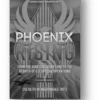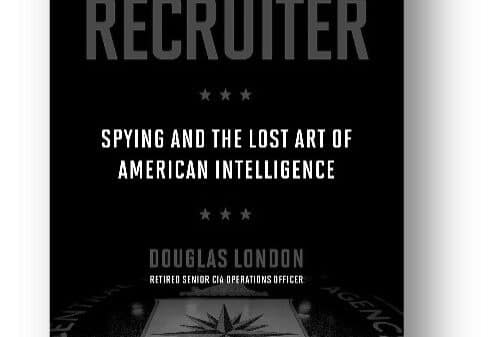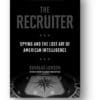ISBN 9780735214507, Riverhead Books, May 2019, 368 pages, $15.50
Reviewed by: CAPT Luke Talian, U.S. Army
As the world continues its march of technological advancement, the need for ever-increasing specialization in more narrow fields seems self-evident. In David Epstein’s Range: Why Generalists Triumph in a Specialized World, he provides a counterargument for this trope, questioning the common assumption of neat and tidy story arcs of archetypes like golf phenom Tiger Woods or the chess grandmaster Polgár sisters. Trained almost from birth in predetermined, specialized fields, these competitors represent what is now a commonly lauded style of parenting after Yale Law Professor Amy Chua released her 2011 best-seller Battle Hymn of the Tiger Mother. However, does this kind of hyper-specialization apply to all fields? As a self-professed generalist, Epstein has transitioned professional careers from environmental science into a senior writer for Sports Illustrated. As a microcosm of the book itself, Epstein’s diverse background makes him distinctively qualified to break down the argument that individuals and teams with broader backgrounds have better chances to solve more complex problem sets.
There is no novel research within Range, and most of the arguments are derived from anecdotally selected studies or popular public figures. However, this does not make it a half-cocked, journalistic pseudo-science book. There are several hundred references for further study, and Range remains compelling and readable throughout. Using his sports background, Epstein pits the likes of narrowly focused athletes like Tiger Woods against octogenarian CEO Frances Hesselbein and sets up one of the most important distinctions within the book: the difference between “kind” and “wicked” problems.
Based on research by psychologist Robin Hogarth, kind learning environments are like chess and golf, which have defined rules and do not change over time. The mistakes that participants make have feedback that is clear. This is opposite to wicked learning environments, where there exists a layer cake of obfuscated rules, timelines, players, and inaccurate feedback. This is where Epstein argues that broad individuals with professional “range” are better suited to address these problems. Through the first few chapters of the book, the author uses several vignettes from the sports and music domains that defy the cult of 10,000 hours of deliberate practice. From the meanderings of jazz greats like Duke Ellington and Django Reinhardt to late bloomers like Roger Federer, Epstein focuses on the fact that the hero or origin story that is not exceptional will not be lauded by the public and will subsequently be discarded. Moreover, most success stories do not appear as linear until historians are able to retrospectively superimpose perfect hindsight.
From there, the book continues to provide examples at a larger scale. Epstein focuses on desirable difficulties in teaching environments and how sacrificing current performance for future progress is necessary for deep learning. This then bleeds into abstract problem-solving and the risk of professionals being taught overly specialized tools that are not interdisciplinary. He also touches on the idea of “match quality” and when quitting may be appropriate. The book presents several examples of studies that show individuals who continue to pursue different careers will outpace their peers in aptitude once they stick to a vocation. One of the clearest examples of this sampling period is Vincent van Gogh. Throughout his early professional life, van Gogh stopped and started many careers, including being an art dealer, a teacher and tutor, an almost missionary, a bookstore clerk, and a would-be pastor. Ultimately, van Gogh experienced success because of his diversity and self-confidence in the face of a reluctant art world. Epstein argues this is not an example of a late developer, but that his prior experience was integral to his eventual achievement.
The last third of the book then focuses on organizations and teams with success stories such as early Nintendo, Frances Hesselbein, and Eli Lilly. Conversely, the author focuses on the dangers of overlearned behavior by using the vignette of Morton Thiokol and the 1986 Challenger disaster, where a lack of data or quantitative analysis created an environment where no engineer could question the process.
From a special operations perspective, almost all individuals within their field have a previous military occupation before they transitioned into special operations. This creates an expectedly diverse pool of experiences and personalities. While some rigid tracks demand a level of specialization and training within aptly named domains of “special” operations, Range highlights the concerns for leaders, planners, and practitioners who are too inflexible in methodology and execution. Epstein claims outside experience is necessary to avoid repeating the same patterns. Additionally, he illuminates research that demonstrates diverse individuals cannot be replicated by diverse teams of specialized individuals. Some of these tropes can be seen in Epstein’s experience with the Pat Tillman Foundation, where some of the nation’s finest warfighters are concerned that they do not fit a mold and fear they do not have the time to change careers.
Given this knowledge, what is a reader supposed to take away from all of this? If you believe Epstein’s argument is compelling, then essentially, the book’s message is to not panic. While a specialized “Tiger Path” may be tidy and prescriptive, Epstein provides countless examples where this is not the only case and where individuals with broad backgrounds provided the necessary breakthroughs in their field. As a veteran of many leadership development programs that espouse the “get rich quick” self-help styles that have worked for their authors, Range gives options. Whether for individuals ready to make a change or leaders who need assurances of team diversity or outside-the-box hires, Range delivers in this ever-changing world.
















